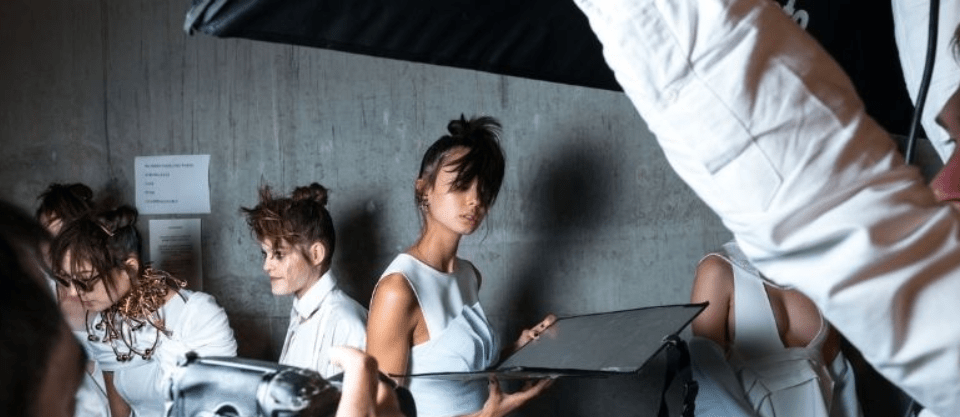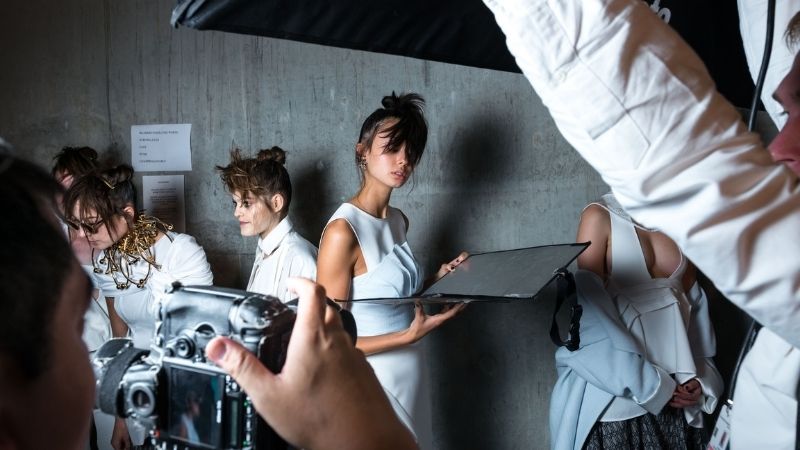
How to Use a Reflector: A Beginner’s Guide to Lighting a Photo With a Reflector
Photography is about more than just understanding how to work a camera. Understanding light, the ways it spreads and bounces, is essential too. Some objects absorb light, others bounce it back in another direction. A reflector is a tool that helps a photographer manipulate the light by providing another surface for the light to bounce off of. Reflectors are inexpensive tools that can make a big impact on your images.
What is a reflector?
A photography reflector is simply a tool that reflects light. A reflector doesn’t create light as a flash does, it simply redirects the existing light, or sometimes redirects the light from a flash or studio strobe.
This is important to understand for two reasons. The first is that the light from a reflector isn’t any brighter than what is already there, so you can’t use one to light up a night portrait unless you are also using a flash or other light source as well. The second point to understand is that the quality of the light will match the quality of the light that’s in the scene. For example, if you’re shooting at sunset, the light that bounces off the reflector will have that same orange hue.
But, there are a few exceptions. Reflectors come in different types and colours, and the colour of the reflective surface may change the light that’s bounced back. A traditional white reflector simply bounces the light, and that light is nice and soft. A silver reflector doesn’t change the colour of the light much, but it is a bit brighter than light reflected off a white one. Gold reflectors are designed to change the colour of the light by warming it up a bit with an orange tone.
Learn Photography
Master the fundamentals of photography, and become a professional photographer.

Since reflectors don’t create light, their primary purpose is to fix shadows. If you are shooting a portrait outdoors during the day, a reflector can be used to fix odd shadows on the face, or even to prevent a backlit subject from becoming a silhouette. Basically, a reflector is used in this way as a replacement for the fill flash.
But reflectors are pretty versatile tools. There’s more than one use for them. In flat lighting, a reflector can add interest or drama to the shot. Some photographers use reflectors as hair lights outdoors. Many reflectors have a black side that can be used to block out light instead of to reflect it. Reflectors are also great for bouncing a flash when there’s nothing around to bounce off of. There are a number of possibilities in how redirecting the light can make for a better photo or replace other lighting equipment.

Five top tips for using a reflector
Using a photography reflector is rather straightforward — simply hold it at an angle that reflects the light the way you want it. Watch how the light changes as you adjust the angle, and find the angle that works the best for your shot. But there are a few tricks to getting the most from a reflector.
1. Hold the reflector directly opposite a light source
If you hold the reflector directly opposite the light source, you’ll get the most, or brightest, light. Depending on how much light there is, you are often still able to reflect light from other angles and positions. There just isn’t as much light reflected.
2. Use a reflector to fill in shadows
Reflectors are great for fixing odd shadows. If the light is directly behind the subject, using a reflector directly in front of the subject will help prevent a silhouette. If the light is coming from one side, using a reflector on the opposite side will help fill in the shadows. Sometimes, light is blocked by large objects. Placing a reflector close to the object can help.
3. Try different angles
Don’t just limit the reflector to upright angles though. Laying the reflector on the ground in front of the subject when taking a portrait can help prevent under-eye shadows.
4. Attach the reflector to a stand
Of course, sometimes it’s impossible to hold the reflector at the perfect angle and still take a picture. Enlist some help if you can, or attach the reflector to a stand or prop it up against something.
5. Take distance into consideration
Remember, distance matters too. Bear in mind that a large light source and a close light source creates the softest light. Try placing the reflector closer to the subject if the light is too hard.
Four reasons to use a reflector in photography
1. Amplify a poor light source
If you’re stuck with inadequate natural lighting and don’t have a powerful photo lightbox at your disposal, a reflector will be your saving grace.
A reflector has a highly reflective surface, and so it can help you make the most of any light source by redirecting light to the desired object or setting. This feature makes photography reflectors a fantastic choice for projects in dark and dimly lit environments, or if you have budget constraints and want to make the most out of LED photography lights.
Photography reflectors are generally portable and easy to carry around, unlike additional photo lightboxes that are quite heavy. So, if you’re bogged down with time constraints and need a quick artificial lighting source that you can carry, a photography reflector is just what you need in your kit.
2. Diffuse a light source
Have you ever looked at a photo and been dismayed at the harm that too much flash or direct sunlight can do? An undiffused light source can thoroughly wash out all the features of an object or setting, creating harsh shadows in the photo. This problem occurs because, generally, artificial light sources or direct natural light sources are unevenly dispersed. Due to this uneven dispersion of light, the setting receives the full blast of light, making it overexposed.
This is why photographers use diffusers to soften the lighting effect. A diffuser works by evenly spreading a light source passing through it so that the result is soft or diffused light. These often come with ‘5 in 1’ photography reflectors. The result is that you can illuminate an object or setting without creating rough tones, and make subtle features stand out. It’s an essential tool for food and fashion photography.
3. Achieve special effects
A reflector can help you take control of the colour tones and intensity of light, which can help you create plenty of special lighting effects. Think of a dark room with just one object of focus, or a shot of a model with only his/her eyes in focus. The scope for customisation is endless, and you can achieve incredible light settings across both indoor and outdoor projects. Fashion and wedding photographers are especially indebted to reflectors, as they can be used to create dramatic shadow effects.

4. Block unwanted light sources
Photography reflectors can block out unwanted light sources making them useful in wildlife photoshoots, as animals are much less likely to run away from a reflected light source in comparison to a harsher flash light source.
What reflector should I buy? Four things to consider
Like every other photography tool, there’s an overwhelming amount of options when it comes to reflectors. Reflectors come in different sizes, shapes and colours, all of which influence how it works.
1. Size
The size is probably the biggest consideration. Larger light sources are softer, so if you pick up a small reflector, it will likely create harsher shadows. Pick up too large of a reflector, and you won’t be able to wrangle the darn thing and the wind will turn it into a sail. A 42” is a good middle ground, with nice soft light and fairly easy handling.
2. Shape
Shape also plays a role too. Along with determining the shape of the light, keep in mind that reflectors can also be used as catchlights or a light that’s reflected back in a person’s eyes. The shape of the reflector will determine the shape of the sparkle in those eyes.
3. Colour
Don’t forget about colour when choosing a reflector either. A silver reflector will bounce the most light but may be too harsh in some scenarios. A white reflector offers softer light, so you’re not fixing the shadows with a reflector that creates its own shadows. Gold reflectors warm up the light that’s bounced, and they also tend to be bright like the silver ones. The gold reflectors aren’t used very often, and a warming effect is easier to control in Photoshop.
Four-in-one reflectors have silver, white and gold as well as a black side for blocking light. They’re usually made with two two-sided covers that are interchangeable, in order to get all four colours in one. It’s a good way to get all the options without a lot of gear to purchase and pack. Keep in mind though that white and silver are the most often used colours.
4. Handles
There’s a number of other factors to consider as well. Handles make them easier to use. Many reflectors are inexpensive, but there are also fancy ones that stretch out over metal frames. An expensive reflector may last a bit longer and be a bit easier to handle, but size and colour are the biggest factors in how they affect your images.
Reflectors are great tools for manipulating existing natural light, as well as expanding the use of different types of artificial lighting. While excellent for portraits, they can also come in handy when shooting macro photography, landscapes, and many other types of photos.
Want to learn more?
If you want to learn more about using a reflector why not join Upskillist’s online photography course? This course can help you realise your full potential in photography by giving you a solid foundation in the subject, covering everything from camera functions and lenses to composition and lighting, and how to use a reflector like a professional. If you’re planning to turn your hobby into a career, Upskillist’s online course will equip you with the knowledge and skills you need to make it happen.
Editor's note: This post was originally published in 2019 and has been updated for comprehensiveness.



